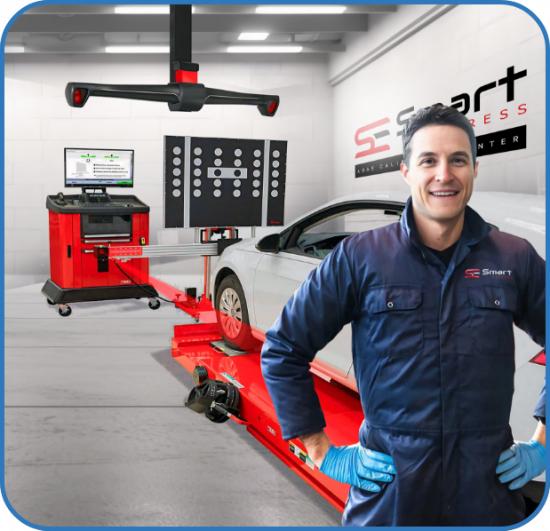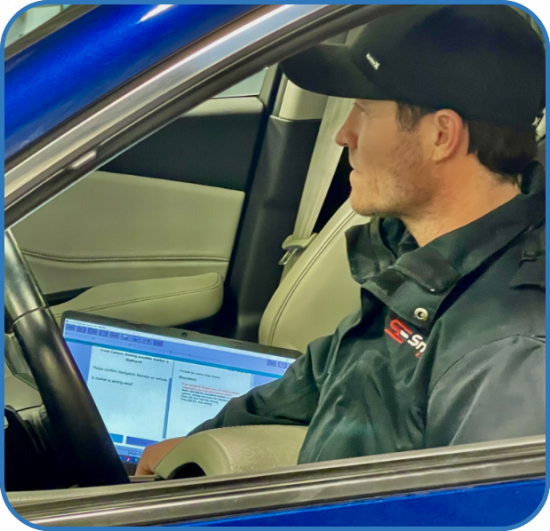ARTICLE
ABS Calibration: Everything You Need to
Know
When it comes to modern vehicle safety, few systems play as critical a role as the Anti-Lock Braking System (ABS). While ABS enhances safety and control in your car, it must be carefully maintained and calibrated over time to ensure peak performance. This is where ABS calibration enters the picture.
This blog explores the intricacies of ABS calibration, why it’s essential, and how it integrates with broader vehicle systems like Advanced Driver Assistance Systems (ADAS). Whether you’re a vehicle owner, a mechanic, or part of a fleet management team, understanding ABS calibration can safeguard lives, optimize performance, and reduce unnecessary costs.

Understanding ABS and Its Purpose
The Anti-Lock Braking System (ABS) is a sophisticated safety feature designed to prevent your wheels from locking up during hard braking or on slippery surfaces. This ensures your car remains steerable and stable, reducing the likelihood of accidents caused by skidding or loss of control.
ABS relies on:
- Wheel speed sensors to monitor the rotational speed of each wheel.
- ABS control unit to adjust braking pressure dynamically.
- Brake system sensor calibration to interpret sensor data and activate the system at the right moment.
- A network of hydraulic valves and brake lines to modulate brake pressure.
- Accurate wheel speed sensor alignment.
- Proper brake pressure modulation calibration.
- Integration with other safety systems like ADAS sensor calibration.
Key Types of ABS Calibration
Calibration comes in two main forms, each tailored to different needs:

1. Static ABS Calibration
vehicle is stationary. Typically conducted through software
diagnostics, it ensures each wheel speed sensor is aligned
and functioning correctly.
-
Using diagnostic tools to identify sensor
malfunctions. -
Adjusting parameters in the ABS control unit
programming. -
Ideal for routine maintenance or sensor
replacements.
1. Dynamic ABS Calibration
This method requires the vehicle to be in motion to
test real-time sensor readings. It provides accurate
feedback on how the ABS and wheel speed sensors
interact under actual driving conditions.
What it involves:
- After a wheel speed sensor replacement.
- When integrating with active systems like ADAS.

The Importance of ABS Calibration
Failing to maintain calibrated ABS can lead to costly repercussions, both in financial and safety terms. Below are some< compelling
reasons why calibration is crucial:
1. Maintain Safety Standards
Improperly calibrated systems could result in slower brake responses or false activations, putting drivers and passengers at risk.
2. Enhanced ADAS Integration
Advanced Driver Assistance Systems (ADAS), such as collision avoidance and automatic emergency braking, rely on real-
time data from ABS sensors. Proper ADAS sensor calibration ensures seamless coordination between ABS and ADAS
features.
3. Prevent Sensor Drift
4. Prolong Component Lifespan
5. Improved Resale Value

ABS Calibration Process Step-by-Step
Step 1: Initial Diagnostic
Step 2: Sensor Adjustment
Technicians realign or replace faulty sensors, ensuring precise wheel speed sensor calibration. Without accurate adjustments, the system cannot detect wheel lockup effectively.
Step 3: System Reset
The ABS control unit is updated or reprogrammed to recognize the adjusted sensors. This step involves ABS control unit programming, tailoring the system to the specific vehicle.
Step 4: Dynamic Testing
Once the calibration is complete, technicians perform dynamic testing by driving the vehicle. This verifies that both dynamic ABS calibration and brake pressure modulation calibration function under various conditions.
Step 5: Final Validation
Common Questions About ABS Calibration
1. How often should ABS be calibrated?
ABS calibration is typically required after replacing sensors, repairing brake lines, or upgrading the braking system. Regular diagnostics every 12 months or at major service intervals is also recommended.
2. Can I calibrate my ABS at home?
3. How does ABS calibration differ from ADAS calibration?
4. What are the costs for ABS calibration?
The Future of ABS Calibration
The future of ABS lies in its integration with emergent technologies like artificial intelligence and vehicle-to-everything (V2X) communication. Here’s what to expect:
- Predictive Systems: AI will enable systems to anticipate braking needs based on past patterns and road conditions.
- Enhanced Sensors: New materials and designs will make sensors more accurate and durable.
- Communication Ecosystems: V2X connectivity will allow the ABS to interact with nearby vehicles and infrastructure, further optimizing safety.
Take Control of Your Vehicle’s Safety
An accurate and well-calibrated ABS system is not just a convenience; it’s a life-saving feature. From maintaining precise sensor
alignment to integrating advanced ADAS functionalities, regular calibration delivers peace of mind and optimal performance.
If you suspect your ABS needs calibration or want to ensure your vehicle is road-ready, contact a professional service provider
today. Certified technicians can handle everything from static ABS calibration to dynamic ABS calibration, leaving you confident in your car’s performance.

